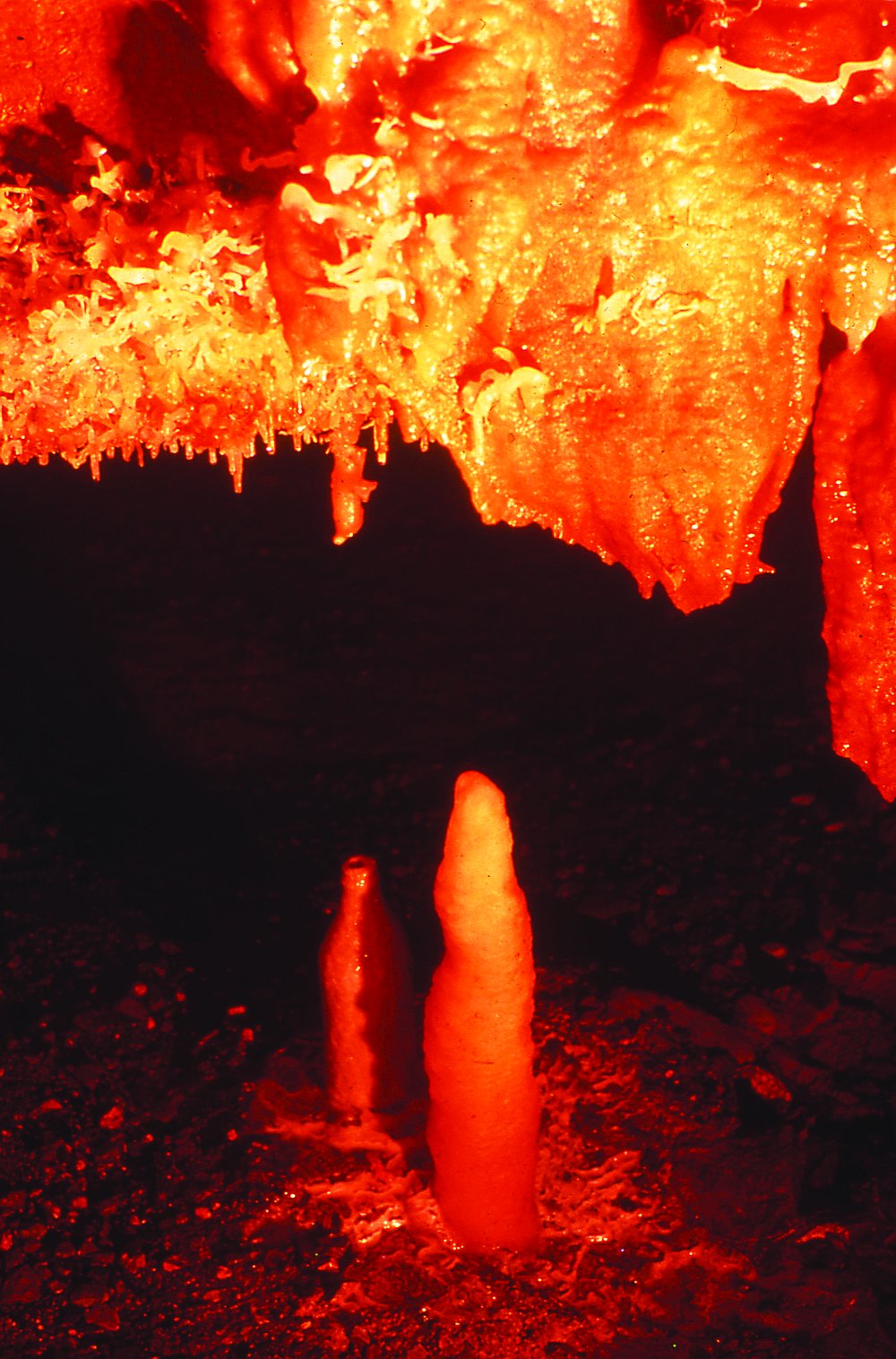
Bottle stalagmite
In the early 1950s, a worker at Australia’s Jenolan Caves in New South Wales placed this lemonade bottle in one of the area’s many beautiful limestone caves.
The bottle sat beneath a continually active stalactite in what is known as the ‘Temple of Baal’.
In the decades that followed, the ‘bottle stalagmite’ became a public testimony to the fact that stalactites and stalagmites don’t take tens of thousands of years or more to form.
In fact, by the time this photograph was taken in the early 1980s, a coating of calcite about three millimetres thick had already formed on the bottle. That’s about one millimetre thickness each decade.
But the rate of stalactite formation may have been even faster in the past. Caves and their formations in tropical areas develop much faster than those in more temperate regions because of higher annual rainfall, and there are other factors too which influence growth rate.
The spectacular formations in the world’s limestone caves could have formed in just a few thousand years—a time framework consistent with the view that they were formed during the closing stages, and after, the worldwide Flood of Noah’s Time.
- Those beautiful stone ‘icicles’ you see hanging from the ceilings of limestone caves are called stalactites (they ‘stay tight’ on the ceiling). The forms you see growing up from the ground are called stalagmites (like the ‘bottle stalagmite’ in the picture). When they meet, the joined pair becomes a column.
Stalactite Facts
- The major mineral in stalactite and stalagmite formation is calcite (calcium carbonate).
- The largest formations are in caves of limestone and dolomite.
- A famous stalactite in Timpanogos Cave National Monument in Utah is shaped like a human heart.
- Stalactites commonly have a central tube which carries water from a ‘feeder joint’ to the stalactite tip.


Readers’ comments
Comments are automatically closed 14 days after publication.